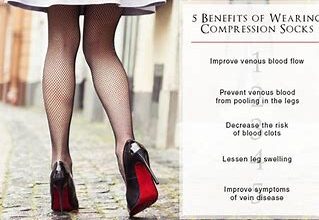Cradle cap is a common condition that affects many newborns and infants. It is characterized by the presence of white or yellowish scaly patches on the baby’s scalp. Although the exact cause of cradle cap is unknown, it is believed to be related to the overproduction of sebaceous glands and the buildup of dead skin cells.
While cradle cap may look unsightly, it is usually harmless and does not cause any discomfort to the baby. In most cases, the condition resolves on its own within a few months. However, in some severe cases, it may lead to further complications such as infection or dermatitis.
It is important to note that cradle cap is not contagious and does not require any specific treatment. However, there are some effective methods that can help remove the scales and prevent their further overproduction. Gentle washing of the baby’s scalp with a mild baby shampoo can help soften the scales and make them easier to remove.
Brushing the baby’s scalp with a soft baby brush can also help remove the scales. However, it is important to do so gently to avoid causing any discomfort or further irritation to the baby’s skin. In some cases, a doctor may recommend the use of a topical cream or ointment to help reduce the production of sebum and prevent the buildup of scales.
In conclusion, cradle cap is a common condition in newborns and infants characterized by the presence of white or yellowish scaly patches on the baby’s scalp. Although the exact cause of cradle cap is unknown, it is believed to be related to the overproduction of sebaceous glands and the buildup of dead skin cells. While cradle cap is usually harmless and resolves on its own within a few months, gentle washing and brushing can help remove the scales and prevent their further production.
Scaly crusty patches: An ER doctor fills you in on what’s going on with cradle cap and how to treat it
Cradle cap is a common condition in infants characterized by scaly, crusty patches on the scalp. While the exact cause is unknown, it is believed to be related to the overproduction of sebaceous glands. These glands normally produce a moisturizing oil, but in cradle cap, there is an excessive production of oil, leading to the formation of scaly patches.
Although cradle cap may look unsightly, it is generally harmless and not contagious. The signs of cradle cap include white or yellowish scales on the scalp. In some cases, the condition can become more severe, causing redness and even infection. However, these severe cases are rare.
To treat cradle cap, it is important to gently brush the affected area with a soft brush to remove the dead skin cells and stimulate the glands. In more severe cases, a doctor may recommend using a medicated cream to help resolve the condition. It is also important to prevent further irritation or infection by keeping the scalp clean and dry.
Cradle cap usually resolves on its own within a few months, as the production of oil returns to normal. In the meantime, it is important to continue brushing the scalp and keeping it clean. If you have any concerns about your baby’s cradle cap, consult with a doctor for further guidance.
Signs of cradle cap
Cradle cap, also known as infantile seborrheic dermatitis, is a common condition that affects newborns. It is characterized by the overproduction of oil from the sebaceous glands in the scalp, causing the skin to become scaly and crusty.
The exact cause of cradle cap is unknown, although it is thought to be related to hormones passed on from the mother to the baby during pregnancy. While the condition can be unsightly, it is generally harmless and does not cause any discomfort to the baby.
The signs of cradle cap include:
| 1. | White or yellowish greasy patches on the scalp |
| 2. | Flaky or scaly skin |
| 3. | Crusty yellow or brown scales |
| 4. | Dandruff-like flakes on the hair or clothing |
| 5. | Mild redness or irritation |
| 6. | Itchiness (in some cases) |
In most cases, cradle cap resolves on its own within a few months without any treatment. However, if the condition is severe or causing discomfort to the baby, it is important to seek medical advice from a doctor.
To manage and prevent cradle cap, it is recommended to gently brush the baby’s scalp with a soft brush to remove the dead skin cells and excess oil. Washing the baby’s hair and scalp regularly with a mild baby shampoo can also help to keep the area clean and prevent infection.
In some cases, the doctor may prescribe a medicated cream or shampoo to treat cradle cap. However, it is important to follow their instructions carefully and avoid using over-the-counter treatments without consulting a healthcare professional first.
It is important to note that cradle cap is not contagious and does not require isolation from other infants or children. With proper care and treatment, the condition can be effectively managed and resolved.
Treatment options
The treatment of cradle cap is often focused on managing the symptoms and preventing further flare-ups. It is important to note that cradle cap is not a serious condition and typically resolves on its own within a few months. However, there are several treatment options available for parents to alleviate the signs and discomfort associated with cradle cap.
- Regularly washing the baby’s scalp with a mild baby shampoo can help remove the excessive sebaceous production that may be causing the condition. It is important to avoid using harsh soaps or scrubbing the scalp too vigorously.
- Gently brushing the baby’s scalp with a soft-bristle brush can help loosen and remove the scaly patches. This should be done carefully to avoid causing any discomfort or irritation to the baby’s scalp.
- Applying a small amount of baby oil or petroleum jelly to the affected areas can help soften the scales and make them easier to remove. It is important to avoid applying too much oil or jelly, as this can lead to further buildup or a greasy appearance.
- If the cradle cap is accompanied by signs of inflammation or infection, a doctor may prescribe a medicated cream or shampoo to address the underlying dermatitis or infection. It is important to follow the doctor’s instructions and use the medication as directed.
- In some cases, cradle cap may be related to an overproduction of sebaceous glands. In these cases, the exact cause of the condition may be unknown. However, it is important to remember that cradle cap is not contagious and does not cause any harm to the baby.
Overall, the best approach to managing cradle cap in infants is to focus on gentle skin care and scal
What is cradle cap

Cradle cap, also known as infantile seborrheic dermatitis, is a common condition that affects many infants, especially within the first few months of their lives. It is characterized by the presence of white or yellowish scaly patches on the baby’s scalp. Although the exact cause of cradle cap is still unknown, it is believed to be related to the overproduction of sebum, a natural oil that is produced by the sebaceous glands in the skin.
The production of excessive sebum leads to the buildup of dead skin cells on the scalp, which then causes the formation of the scaly patches. Although cradle cap is not contagious and does not typically cause any discomfort to the baby, it can be unsightly and may even lead to further skin infections if left untreated.
In most cases, cradle cap resolves on its own without any treatment. However, some parents may choose to gently brush their baby’s scalp with a soft brush to remove the scales. It is important to note that excessive brushing or picking at the scales may irritate the baby’s scalp and cause further inflammation.
If the condition is more severe or persists despite gentle brushing and regular washing, it is recommended to consult a doctor for further evaluation and treatment options. The doctor may prescribe a medicated shampoo or cream to help remove the scales and reduce inflammation. In some cases, cradle cap may also be related to other underlying skin conditions, such as eczema.
To prevent the onset of cradle cap or reduce its severity, parents can try to keep the baby’s scalp clean and dry. Regular washing with a mild baby shampoo and gentle brushing can help remove excess oil and dead skin cells. It is important to avoid using harsh soaps or scrubbing the scalp too vigorously, as this may further aggravate the condition.
In conclusion, cradle cap is a common and harmless condition that affects many newborns and infants. Although the exact cause is unknown, it is believed to be related to the overproduction of sebum and the buildup of dead skin cells on the scalp. Most cases will resolve on their own, but gentle brushing and regular washing can help prevent and manage the condition.




